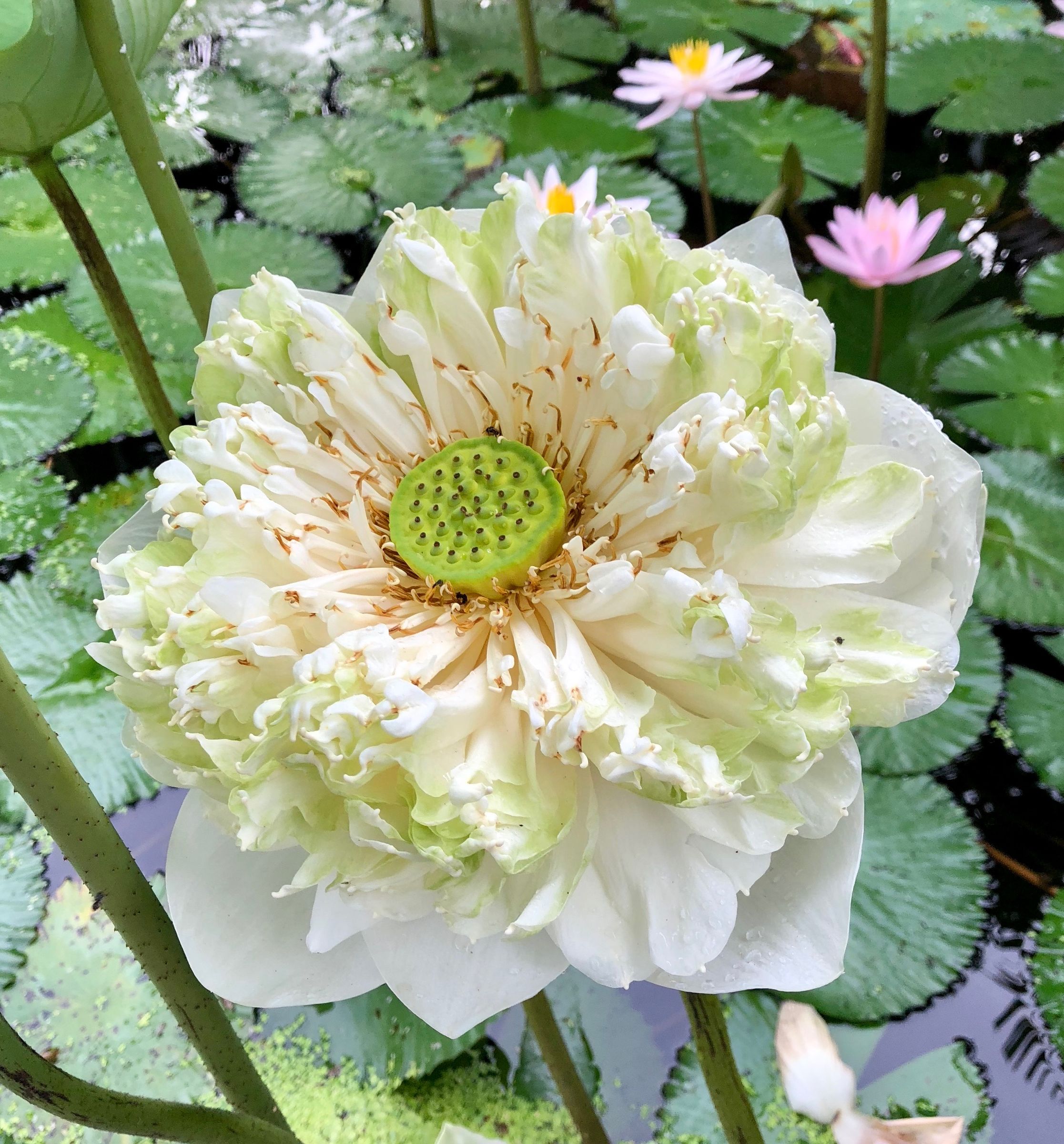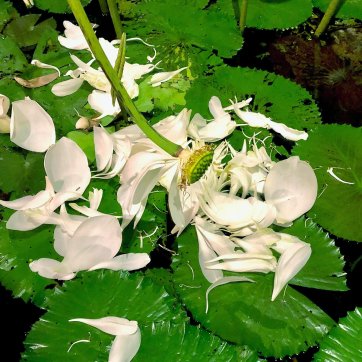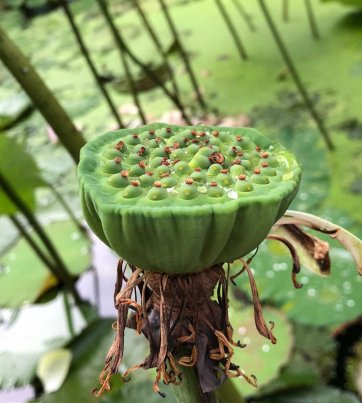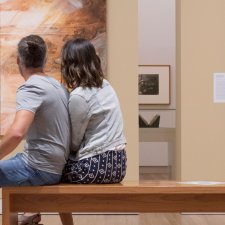That tradition goes back at least as far as the pottery of Jōmon Japan (5000−1500 BCE) and arises also in India, in both cases from the plant we know as Nelumbo nucifera, of which sophisticated Chinese and Japanese horticulturalists were producing new cultivars from at least 800 CE. However, it was everywhere throughout the subcontinent and Sri Lanka by the second century BCE. Crucially it travelled with Buddhism from India into Central Asia and back to China and Japan, as indeed it arrived in Java soon afterwards, in the early centuries CE. For millennia the lotus has been sacred to Hindus and Buddhists alike. It is synonymous with Lakshmi, the quintessential Vedic lotus goddess and consort of Vishnu, but its most fully developed cosmogony is Buddhist: Rooted in the mucky deposits at the bottom of the pond, that is, the mud of existence, the lotus sends its stem up through the waters of emptiness and blooms high above them. Thereby it represents the Middle Path, unattached and perfect. The lotus also blooms and bears its fruit simultaneously, which demonstrates the non-duality of cause and effect, being one of the attributes of the Real or “Not-False” Dharma, in other words the state of Buddha-hood. I see now why you would naturally presume the lotus was sacred. There is no better way to get an immediate, real sense of large chunks of Hindu and Buddhist iconography than to spend a little time observing the magnificent lotus. And of course, there it is, about a kilometre from Yogyakarta Airport, inscribed in stone 1,200 years ago on the exquisite little temple of Sambisari (ca. 812–38 CE), an artefact of the remarkable Javanese Mataram Kingdom, looking exactly the same, a moving testament to the lotus’s continuous appeal to the senses.
This is important. I found myself recalling dry passages in art history classics that so tediously referenced lotus ornament but, because I had never observed one in action—really spent time looking closely at it—I quite obviously had no idea; no way of “getting it.” I wonder how many other serious young students of the history of art are similarly missing the point? Here, though, the plant itself supplies the living model for all those shapely finials, vessels, mouldings, friezes, fringes, bases, petal motifs, capitals: the whole box and dice. It travels from ancient Memphis to Athens; from India to the carpets and porcelain of medieval Persia; thence with the Arabs to Córdoba; and from India in the other direction to Burma, Cambodia and Central Java, and onward to imperial China. It passes thence, back and forth, right the way along the silk route (with detours). This is extremely moving because the article on “Lotus” in the Grove Dictionary of Art lays emphasis on the fact that various bodhisattvas, for example, inhabit “highly stylised” lotus; that scrolls of lotus ornament in sixth-century CE Chinese porcelain are “unrealistic,” and so on. What nonsense! You need only spent half a day by the lotus pond to realise that the best examples of such ornament capture exactly the full essentials, the evanescent moods of this most sumptuous and beguiling flower, the behaviour of its leaves, the arabesque profile of its outermost petals, the riot of its inner workings, the perfect structure of its fruit.

























